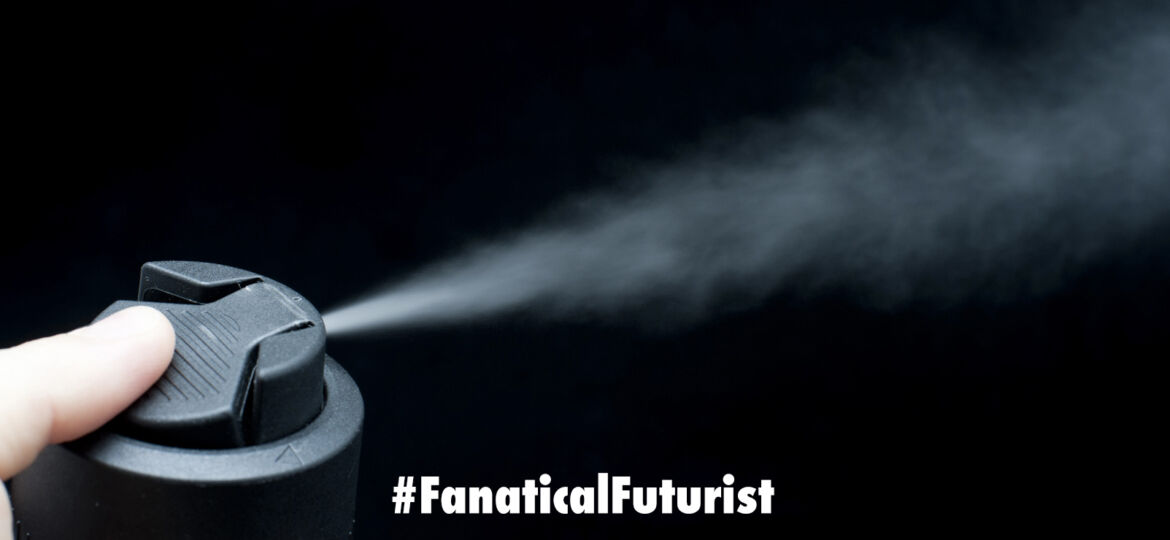
WHY THIS MATTERS IN BRIEF
Being able to spray nanobots onto surfaces and objects is a fast way to turn them from dumb objects into smart ones that have new sensing capabilities.
You may have sworn off aerosol sprays back in the 1990’s when everyone was talking about the hole in the ozone layer, but now a team of researchers from MIT has found a use for aerosols that could be good for both the environment and our health, as well as many other things besides. The aerosol in question contains nanobots, tiny robot sensors with the potential to do everything from detecting dangerous leaks in pipelines to diagnosing health issues, and MIT published their research in Nature Nanotechnology the other week.
Each nano-scale sensor in the aerosol spray contains two parts. The first is a colloid, an extremely tiny insoluble particle or molecule. Colloids are so small, in fact, they can remain suspended in a liquid or the air indefinitely — the force of particles colliding around them is stronger than the force of gravity attempting to pull them down.
The second part of the sensor is a complex circuit containing a chemical detector built from a 2D material, such as Graphene. When this detector encounters a certain chemical in its environment its ability to conduct electricity improves. The circuit also contains a photodiode, a device that can convert ambient light into electric current. This provides all the electricity needed to power the circuit’s data collection and memory.
The researchers grafted their circuits onto colloids, thereby giving them the colloid’s ability to travel in unique environments. Once combined, the researchers “aerosolised the nanobots,” or in non geek speak, converted them into aerosol form – something that wouldn’t be possible without the addition of the colloid.
“[The circuits] can’t exist without a substrate,” said the study’s lead author Michael Strano in a news release. “We need to graft them to the particles to give them mechanical rigidity and to make them large enough to get entrained in the flow.”
The MIT team sees a number of potential diagnostic uses for their sprayable, microscopic sensors, in everything from aerospace to healthcare, and demonstrated a couple of them in their study. As one example, they designed their sensors to detect the toxic chemical Ammonia, then tested its ability within a sealed section of pipe. They sprayed the sensors into one side of a pipe, then gathered them at the other end using a piece of cheesecloth. When they examined the sensors, they could tell they’d come in contact with ammonia based on the information stored in the sensors’ memory.
In the real world, this could save inspectors from having to manually look at an entire length of pipe from the outside. Instead, they could simply let the aerosol travel the length of the pipeline, then look for any data in its memory that might signal a problem, such as an encounter with an outside chemical that shouldn’t be in the pipeline – something that’d be pretty handy.
As the MIT team noted in the news release, eventually, this same technology could help diagnose problems in the human body, for example, by traveling along our digestive tract, gathering data, and relaying it to medical experts.
“We see this paper as the introduction of a new field [in robotics],” said Strano.
Source: MIT

















[…] could be scaled up to turn entire surfaces into cameras and sensor systems. Imagine, for example, just being able to spray a wall with “smart paint” and turn it into a giant camera – we already have that tech coming down […]